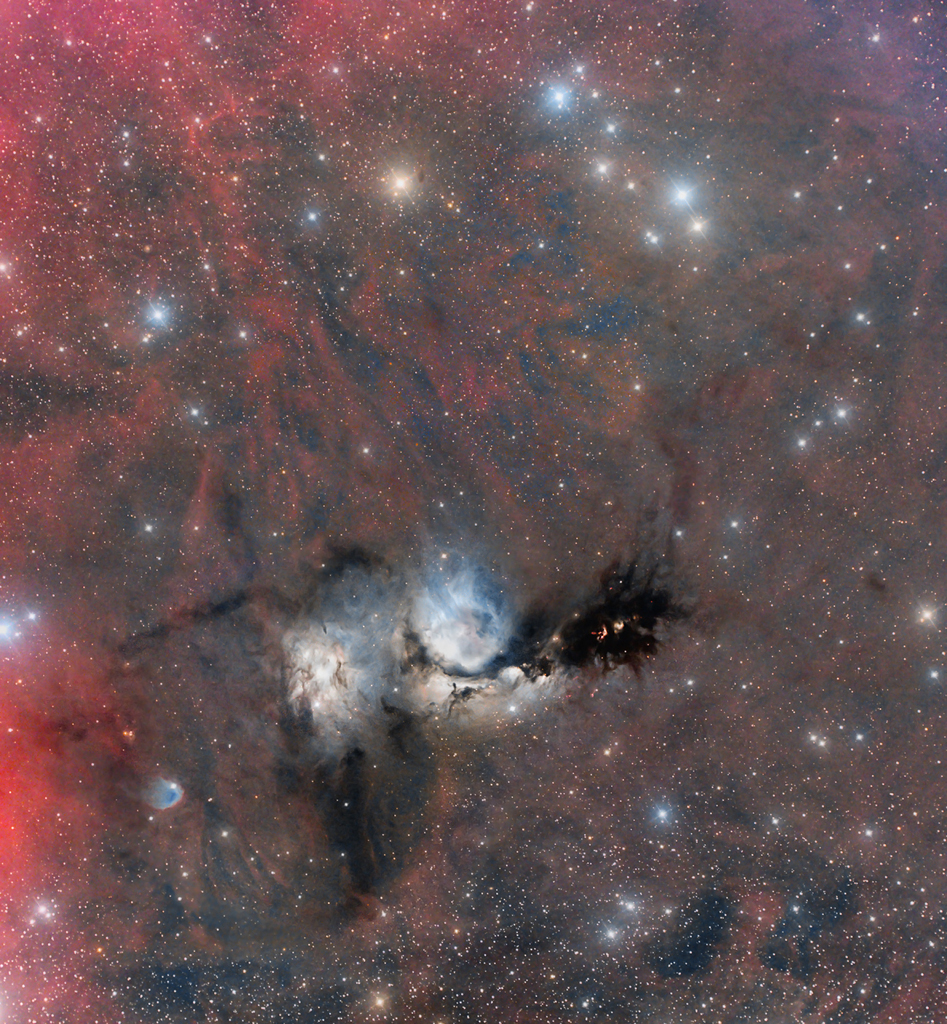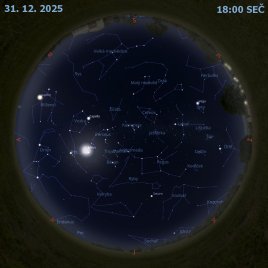M78 v širokém poli

Uznání a copyright: Wes Higgins
Plodné
souhvězdí Orion
je bohaté na mračna
mezihvězdného
prachu a
zářící mlhoviny.
Jedna z
nejjasnějších M78
je v centru barevného
širokoúhlého pohledu,
který pokrývá oblast na sever od
Orionova pásu.
Modravá reflexní mlhovina měří asi 5 světelných roků a nachází se ve vzdálenosti asi 1500 světelných roků.
Její barva vzniká tím, že prach odráží z horkých mladých hvězd
především
modré
světlo.
Hned vlevo
od M78 je reflexní mlhovina NGC 2071.
Proti tmavým prachovým pásům vynikají skvrny emise
Herbig-Harových objektů,
energetických výtrysků ze vznikajících hvězd.
Expozice také vyjevuje slabou, všudepřítomnou červenou zář atomů vodíku.
Dnes: Živé povídání o APODu 21. ledna 18:00 - 18:30 na
google meet česky.
Seznam odkazů v popisu
- APOD: 2016-12-04 Oficiální jména hvězd v Orionu
- Unh.edu: What is the Interstellar Medium?
- NASA: The Orion Nebula
- SEDS.org: Messier 78
- AstroBin.com: Wes Higgins: M78
- APOD: 2017-11-23 Alnitak, Alnilam, Mintaka
- Astronomy.cz: Leoš Ondra: Pleiades: Mix your own reflection nebula
- UCR.edu: Why is the sky blue?
- StarPointing.com: M78 labeled
- Wikipedia: Herbig–Haro object#Discovery_and_history_of_observations
NASA Official: Phillip Newman Specific rights apply. NASA Web Privacy Policy and Important Notices
A service of: ASD at NASA / GSFC & Michigan Tech. U.
Odkaz na originální APOD


